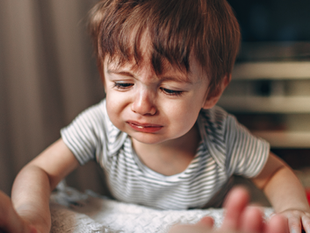
When Should I Wean Off the Bottle? How to Make It Work for You and Your Child

Transitioning your child away from the bottle can feel like a daunting step. As parents, we often hold on to routines that feel familiar, especially the ones that help us get through the day, and night! And if the bottle is working, the thought might be: “Why rock the boat?” But like all things in parenting, there comes a time when we have to let go of what’s comfortable to support our little one’s development. Experts generally recommend weaning off the bottle by around 12 months of age. That’s right, even though they still seem so little, they’re often more ready than we give them credit for.
Let’s talk about why the bottle needs to go, how to prepare for this transition with love and confidence, and what to expect along the way.
What Age Should You Wean a Baby Off the Bottle?
The recommended age is 12 months. It’s a question many parents ask: “They’re still so little, can’t we keep the bottle a bit longer?” And we hear you. But there are some important developmental and health reasons why this transition matters.
Why Is It Important to Wean From the Bottle by 12 Months?
Tooth Trouble
That cute bedtime bottle might feel like a comforting end to the day, but if it contains milk and is sipped on while drifting off to sleep, it can be a problem. Milk sugars linger in the mouth, and with reduced saliva production during sleep, there’s nothing to wash those sugars away. This creates the perfect storm for early tooth decay, commonly known as "bottle rot" (AAPD, 2020). Over time, prolonged sucking on a bottle can even impact how those little teeth come in, leading to alignment issues like overbites.
Increased Risk of Illness
Bottle-feeding while lying down isn’t just a dental concern, it can also contribute to ear infections. Fluid can pool at the back of the throat and travel up the Eustachian tube, creating the kind of environment bacteria love.
Nutrition Gaps
Toddlers who rely heavily on bottles may fill up on milk, often over a liter a day, leaving little appetite for iron and zinc-rich foods essential for growth. Research published in Pediatrics (2002) links prolonged bottle use beyond 12 to 15 months to iron deficiency anemia and reduced interest in solid foods. This also contributes to picky eating habits, creating long-term challenges in dietary variety.
Emotional Attachment and Obesity Risk
As toddlers grow, their emotional attachment to the bottle increases. It becomes a go-to comfort object, making the weaning process more emotionally loaded the longer it’s delayed. Studies (Reilly and Kelly, 2011) also show that bottle use as a primary emotional soothing tool correlates with higher rates of obesity later in childhood, as it blurs the line between emotional and physical hunger.
Impact on Sleep Quality
Night-time bottles can interrupt consolidated sleep. Feeding to sleep reinforces sleep associations that require parental intervention, and research shows it limits access to deeper stages of restorative sleep. Once nutritional night feeds are no longer needed, continuing them can hinder your child’s sleep quality and overall development (Mindell & Williamson, 2018).
How Can You Prepare to Wean Off the Bottle?
We always want to start prep work months before making a big change. The goal isn’t to rip the bottle away, it’s to slowly help your child build comfort and confidence with something new.
Start introducing a sippy or straw cup around six months. At this stage, it’s just practice, they can have breastmilk, formula, or small amounts of cooled boiled water in the cup. Cheer them on and celebrate the little wins: “Wow, you’re drinking from your big kid cup!” Sit with them, make eye contact, and model sipping from a cup yourself. Toddlers and preschoolers love anything fun and personal, so let them decorate their cup with stickers or pick one in their favorite color or character.
You can even turn the transition into a little celebration. A “big kid” dinner, a small reward, or a new bedtime book can make it feel like a proud achievement.
What Are the Best Ways to Wean a Baby Off the Bottle?
By 12 months, most babies are down to just two bottles: morning and evening. And no, night feeds are no longer needed at this stage.
Gradual Weaning: Think of this as the slow and steady method. Start by replacing the morning bottle with a cup for a few days. Once that feels solid, swap the evening bottle too. Keep offering milk in a cup during usual bottle times so the rhythm feels familiar.
Immediate Weaning: This is the “rip off the bandage” method. You remove all bottles from sight and switch entirely to cups. Offer drinks frequently, especially with meals and snacks. When your child asks for a bottle, respond with a comforting, “We don’t use bottles anymore, but you can have your milk in your cup.” Offer a snack or a snuggle to help with the transition.
How Do You Handle Emotions During the Bottle Weaning Process?
This transition isn’t just physical, it’s emotional too. Your child might protest, fuss, or ask for their bottle in the most heartbreaking little voice. It’s okay. Stay calm and stay consistent.
Offer plenty of cuddles, extra stories, or favorite songs at bedtime. Keep their sleep routine intact as much as possible. If they’re thirsty or hungry, offer a snack and a cup. If they just need closeness, sit and play or read a book together. And don’t forget the power of a comfort item, a soft toy or blanket can help bridge the gap between old and new routines.
Minimize temptation by keeping bottles out of sight. If your child struggles with their cup, try removing the valve to make it easier to drink from.
What If You Need Help Weaning Off the Bottle at Night?
Weaning off the bottle is a big step, but it’s one your child is capable of taking with your support. Whether you choose the gradual route or go all in, consistency and love will get you there. Remember, you’re not just saying goodbye to the bottle, you’re saying hello to a new phase of growth, independence, and healthy habits.
And if it feels tough, because, let’s be real, sometimes it is, know that you don’t have to navigate it alone. For extra guidance and encouragement every step of the way, book a 30-minute coaching call if you're struggling with the transition, especially if you're looking to wean off night feeds. We're here to support you every step of the way.
FAQ
Is it bad to give a bottle at bedtime after age one?
It’s not inherently bad, but it does increase the risk of tooth decay, obesity, and emotional over-reliance. Most guidelines suggest weaning off by 12 to 18 months.
How can I stop my baby from waking up for bottles overnight?
Gradually reduce the volume or length of feeds while increasing other comfort cues. Make sure they’re getting enough nutrition during the day. If you are stuggling get in touch with us, we can help!
Can I use a sippy cup instead of a bottle?
Yes, but open cups or straw cups are generally recommended to support proper oral development.
What if my toddler won’t drink milk from a cup?
Stay consistent and try different cup styles. Add small fun incentives and offer milk with meals to build the habit naturally.
References
American Academy of Pediatric Dentistry (2020). Policy on Early Childhood Caries.
Centers for Disease Control and Prevention (2022). Recommendations for Bottle Feeding.
Brotanek, J. M., et al. (2005). Iron deficiency in early childhood in the United States. Pediatrics, 115(3), 486-493.
Mindell, J. A., and Williamson, A. A. (2018). Benefits of a bedtime routine in young children: Sleep, development, and beyond. Sleep Health, 4(5), 453–459.
Reilly, J. J., and Kelly, J. (2011). Long-term impact of overweight and obesity in childhood and adolescence on morbidity and premature mortality in adulthood: systematic review. International Journal of Obesity, 35(7), 891-898.







_edited_edited.png)
.png)